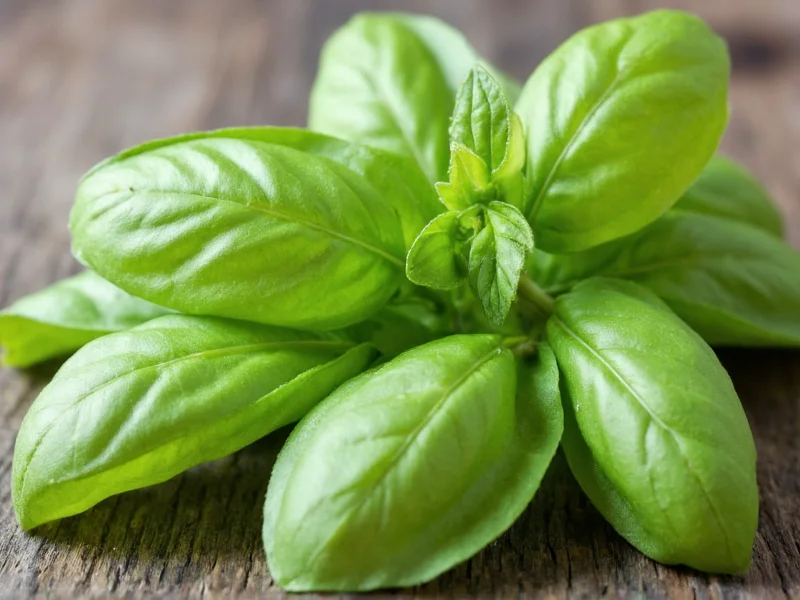Drying basil transforms your garden harvest into a shelf-stable pantry staple that maintains culinary utility long after the growing season ends. Understanding the precise conversion between fresh and dried forms ensures your recipes maintain balanced flavor profiles regardless of which form you use.
Why Convert Fresh Basil to Dried?
Fresh basil offers vibrant flavor but has a short shelf life of 5-7 days refrigerated. Drying extends usability to 1-3 years while concentrating certain compounds. The drying process removes 90-95% of moisture content, intensifying some flavor elements while diminishing others. This preservation method allows home gardeners and cooks to enjoy basil's essence year-round without freezer space requirements.
Understanding the Fresh to Dried Conversion Ratio
The standard conversion ratio of 3:1 (fresh to dried) exists because moisture removal significantly reduces volume. However, this ratio isn't merely about physical space—it reflects chemical changes in volatile compounds. Fresh basil contains linalool and eugenol that provide its characteristic aroma, which partially evaporate during drying.
| Measurement | Fresh Basil | Dried Basil |
|---|---|---|
| Volume | 3 tablespoons | 1 tablespoon |
| Weight | 9 grams | 3 grams |
| Culinary Impact | Bright, sweet notes | Earthy, concentrated flavor |
Effective Drying Methods Compared
Three primary techniques yield quality dried basil, each with distinct advantages:
Air Drying (Traditional Method)
Bundle 5-6 stems together and hang upside down in a dark, well-ventilated space with 40-60% humidity. Complete drying takes 1-2 weeks. This method best preserves volatile oils when performed at temperatures below 85°F (29°C). Monitor regularly for mold development, especially in humid climates.
Oven Drying (Accelerated Process)
Spread leaves in a single layer on baking sheets. Use the oven's lowest setting (150-170°F or 65-77°C) with the door slightly ajar. Check every 15 minutes until crisp—typically 2-4 hours. This method risks flavor degradation if temperatures exceed 185°F (85°C), causing essential oil evaporation.
Dehydrator Method (Most Consistent Results)
Set dehydrator to 95°F (35°C) and dry leaves for 4-8 hours. The controlled environment preserves maximum flavor compounds while ensuring complete moisture removal. Commercial dehydrators maintain precise temperature and airflow critical for optimal basil preservation.
Flavor Profile Transformation Explained
Fresh basil contains higher concentrations of methyl chavicol (estragole), contributing to its sweet, anise-like notes. Drying converts some compounds into eugenol, creating the warmer, clove-like character of dried basil. This chemical transformation means dried basil works better in long-simmered dishes like tomato sauces, while fresh excels in finishing applications like pesto or caprese salads.
Proper Storage Techniques for Maximum Shelf Life
Store completely dried basil in airtight glass containers away from light and heat. Include a food-safe desiccant packet to absorb residual moisture. Properly stored dried basil maintains peak flavor for 12-18 months. Check periodically for moisture condensation or loss of vibrant green color, which indicates degradation. Never store dried herbs above stoves or near windows where temperature fluctuations occur.
Culinary Application Guidelines
Adjust your cooking technique based on basil form:
- Fresh basil: Add during final cooking minutes or as garnish to preserve volatile aromatics
- Dried basil: Incorporate early in cooking to allow rehydration and flavor dispersion
- Conversion adjustment: When substituting dried for fresh in established recipes, start with 1/3 the amount and adjust to taste
Common Drying Mistakes to Avoid
Many home preservers encounter these issues:
- Insufficient drying: Leaves feel crisp but retain internal moisture, leading to mold
- Excessive heat: Temperatures above 185°F degrade flavor compounds
- Poor storage: Using plastic bags that trap moisture instead of airtight containers
- Incorrect harvesting: Picking basil after morning dew has dried but before afternoon heat intensifies











 浙公网安备
33010002000092号
浙公网安备
33010002000092号 浙B2-20120091-4
浙B2-20120091-4